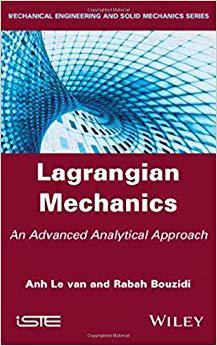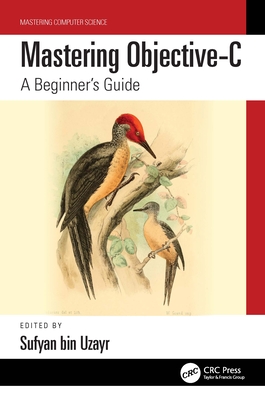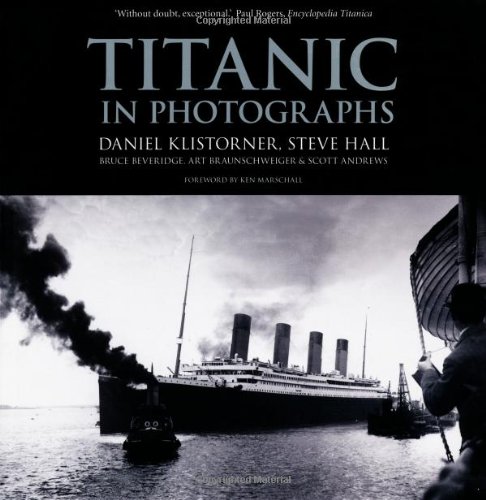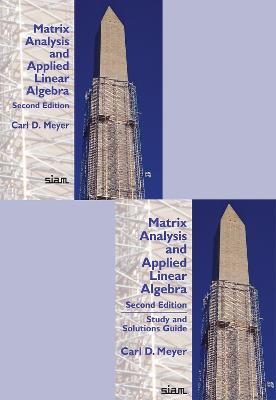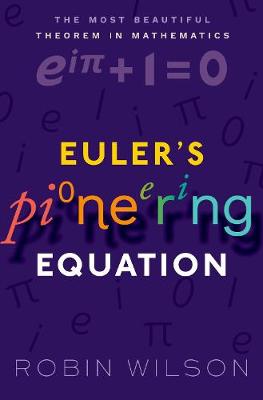图书简介
Lagrangian Mechanics explains the subtleties of analytical mechanics and its applications in rigid body mechanics. The authors demonstrate the primordial role of parameterization, which conditions the equations and thus the information obtained; the essential notions of virtual kinematics, such as the virtual derivative and the dependence of the virtual quantities with respect to a reference frame; and the key concept of perfect joints and their intrinsic character, namely the invariance of the fields of compatible virtual velocities with respect to the parameterization. Throughout the book, any demonstrated results are stated with the respective hypotheses, clearly indicating the applicability conditions for the results to be ready for use. Numerous examples accompany the text, facilitating the understanding of the calculation mechanisms. The book is mainly intended for Bachelor?s, Master?s or engineering students who are interested in an in-depth study of analytical mechanics and its applications.
Preface xi 1 Kinematics 1 1.1 Observer - Reference frame 1 1.2 Time 2 1.2.1 Date postulate 2 1.2.2 Date change postulate 2 1.3 Space 3 1.3.1 Physical space 3 1.3.2 Mathematical space 4 1.3.3 Position postulate 4 1.3.4 Typical operations on the mathematical space E 6 1.3.5 Position change postulate 7 1.3.6 The common reference frame R0 9 1.3.7 Coordinate system of a reference frame 12 1.3.8 Fixed point and fixed vector in a reference frame 14 1.4 Derivative of a vector with respect to a reference frame 15 1.5 Velocity of a particle 17 1.6 Angular velocity 17 1.7 Reference frame defined by a rigid body: Rigid body defined by a reference frame 19 1.8 Point attached to a rigid body: Vector attached to a rigid body 19 1.9 Velocities in a rigid body 20 1.10 Velocities in a mechanical system 22 1.11 Acceleration 24 1.11.1 Acceleration of a particle 24 1.11.2 Accelerations in a mechanical system 24 1.12 Composition of velocities and accelerations 24 1.12.1 Composition of velocities 24 1.12.2 Composition of accelerations 25 1.13 Angular momentum: Dynamic moment 25 2 Parameterization and Parameterized Kinematics 27 2.1 Position parameters 27 2.1.1 Position parameters of a particle 27 2.1.2 Position parameters for a rigid body 28 2.1.3 Position parameters for a system of rigid bodies 32 2.2 Mechanical joints 33 2.3 Constraint equations 33 2.4 Parameterization 37 2.5 Dependence of the rotation tensor of the reference frame on the retained parameters 39 2.6 Velocity of a particle 41 2.7 Angular velocity 44 2.8 Velocities in a rigid body 45 2.9 Velocities in a mechanical system 47 2.10 Parameterized velocity of a particle 48 2.10.1 Definition 48 2.10.2 Practical calculation of the parameterized velocity 49 2.11 Parameterized velocities in a rigid body 50 2.12 Parameterized velocities in a mechanical system 51 2.13 Lagrange?s kinematic formula 52 2.14 Parameterized kinetic energy 54 3 Efforts 57 3.1 Forces 57 3.2 Torque 59 3.3 Efforts 60 3.4 External and internal efforts 61 3.4.1 External effort 61 3.4.2 Internal effort 62 3.5 Given efforts and constraint efforts 62 3.6 Moment field 64 4 Virtual Kinematics 67 4.1 Virtual derivative of a vector with respect to a reference frame 67 4.2 Virtual velocity of a particle 70 4.3 Virtual angular velocity 75 4.4 Virtual velocities in a rigid body 81 4.4.1 The virtual velocity field (VVF) associated with a parameterization 81 4.4.2 Virtual velocity field (VVF) in a rigid body 82 4.5 Virtual velocities in a system 83 4.5.1 VVF associated with a parameterization 83 4.5.2 VVF on each rigid body of a system 84 4.5.3 Virtual velocity of the center of mass 84 4.6 Composition of virtual velocities 85 4.6.1 Composition of virtual velocities of a particle 85 4.6.2 Composition of virtual angular velocities 86 4.6.3 Composition of VVFs in rigid bodies 87 4.7 Method of calculating the virtual velocity at a point 88 5 Virtual Powers 91 5.1 Principle of virtual powers 91 5.2 VP of efforts internal to each rigid body 92 5.3 VP of efforts 92 5.4 VP of efforts exerted on a rigid body 94 5.4.1 General expression 94 5.4.2 VP of zero moment field efforts exerted upon a rigid body 94 5.4.3 Dependence of the VP of efforts on the reference frame 94 5.5 VP of efforts exerted on a system of rigid bodies 95 5.5.1 General expression 95 5.5.2 Dependence of the VP of the efforts on the reference frame 96 5.5.3 VP of zero moment field efforts exerted on a system of rigid bodies 96 5.5.4 VP of inter-efforts between the rigid bodies of a system 96 5.5.5 The specific case of the inter-efforts between two rigid bodies 97 5.6 Summary of the cases where the VV and VP are independent of the reference frame 98 5.7 VP of efforts expressed as a linear form of the qi 99 5.8 Potential 101 5.8.1 Definition 101 5.8.2 Examples of potential 101 5.9 VP of the quantities of acceleration 108 6 Lagrange?s Equations 111 6.1 Choice of the common reference frame R0 111 6.2 Lagrange?s equations 112 6.3 Review and the need to model joints 115 6.4 Existence and uniqueness of the solution 116 6.5 Equations of motion 118 6.6 Example 1 118 6.7 Example 2 120 6.7.1 Reduced parameterization 120 6.7.2 Total parameterization 121 6.7.3 Comparing the two parameterizations 122 6.8 Example 3 123 6.8.1 Independent parameterization 124 6.8.2 Total parameterization 126 6.8.3 Comparing the two parameterizations 127 6.9 Working in a non-Galilean reference frame 127 7 Perfect Joints 131 7.1 VFs compatible with a mechanical joint 132 7.1.1 Definition 132 7.1.2 Generalizing the definition of a compatible VVF 134 7.1.3 Example 1 for VVFs compatible with a mechanical joint 135 7.1.4 Example 2 136 7.1.5 Example 3: particle moving along a hoop rotating around a fixed axis 137 7.2 Invariance of the compatible VVFs with respect to the choice of the primitive parameters 139 7.2.1 Context 139 7.2.2 Relationships between the real quantities resulting from the two parameterizations 140 7.2.3 Relationships between the virtual quantities resulting from the two parameterizations 141 7.2.4 Identity between the VVFs associated with the two parameterizations and compatible with a mechanical joint 143 7.2.5 Example 145 7.3 Invariance of the compatible VVFs with respect to the choice of the retained parameters 148 7.3.1 Context 148 7.3.2 Relationships between the real quantities resulting from the two parameterizations 150 7.3.3 Relationships between the virtual quantities resulting from the two parameterizations 151 7.3.4 Identity between the VVFs associated with the two paramaterizations and compatible with a mechanical joint 153 7.3.5 Example 1 155 7.3.6 Example 2 156 7.3.7 Example 3: particle moving along a hoop rotating around a fixed axis 156 7.4 Invariance of the compatible VVFs with respect to the choice of the parameterization 157 7.5 Perfect joints 158 7.5.1 Definition of a perfect joint 158 7.5.2 Example 1 160 7.5.3 Example 2 161 7.5.4 Example 3 162 7.5.5 Example 4 165 7.6 Example: a perfect compound joint 167 7.6.1 Perfect combined joint 168 7.6.2 Superimposition of two perfect elementary joints 169 8 Lagrange?s Equations in the Case of Perfect Joints 173 8.1 Lagrange?s equations in the case of perfect joints and an independent parameterization 174 8.1.1 Lagrange?s equations 174 8.1.2 Review 174 8.1.3 Particular case 175 8.2 Lagrange?s equations in the case of perfect joints and in the presence of complementary constraint equations 175 8.2.1 Lagrange?s equations with multipliers 176 8.2.2 Practical calculation using Lagrange?s multipliers 178 8.2.3 Review 180 8.2.4 Remarks 180 8.3 Example: particle on a rotating hoop 181 8.3.1 Independent parameterization 182 8.3.2 Reduced parameterization no. 1 183 8.3.3 Reduced parameterization no. 2 184 8.3.4 Calculation of the engine torque 185 8.4 Example: rigid body connected to a rotating rod by a spherical joint (no. 1) 187 8.5 Example: rigid body connected to a rotating rod by a spherical (joint no. 2) 189 8.5.1 Total parameterization 189 8.5.2 Independent parameterization 191 8.6 Example: rigid body subjected to a double contact 191 8.6.1 Preliminary analysis 192 8.6.2 Independent parameterization 194 8.6.3 Reduced parameterization 196 9 First Integrals 199 9.1 Painleve?s first integral 199 9.1.1 Painleve?s lemma 199 9.1.2 Painleve?s first integral 201 9.2 The energy integral: conservative systems 203 9.2.1 Energy considerations in addition to the energy integral 204 9.3 Example: disk rolling on a suspended rod 205 9.4 Example: particle on a rotating hoop 208 9.5 Example: a rigid body connected to a rotating rod by a spherical joint (no. 1) 208 9.5.1 First integrals via Newtonian mechanics 209 9.6 Example: rigid body connected to a rotating rod by a spherical joint (no. 2) 209 9.7 Example: rigid body subjected to a double contact 210 9.7.1 Using Newtonian mechanics to find a first integral 211 10 Equilibrium 213 10.1 Definitions 213 10.1.1 Absolute equilibrium 213 10.1.2 Parametric equilibrium 214 10.2 Equilibrium equations 215 10.2.1 List of equations and unknowns 218 10.2.2 The explicit presence of time in equilibrium equations 218 10.3 Equilibrium equations in the case of perfect joints and independent parameterization 219 10.3.1 List of equations and unknowns 220 10.4 Equilibrium equations in the case of perfect joints and in the presence of complementary constraint equations 221 10.4.1 List of equations and unknowns 222 10.5 Stability of an equilibrium 223 10.6 Example: equilibrium of a jack 224 10.7 Example: equilibrium of a lifting platform 225 10.8 Example: equilibrium of a rod in a gutter 227 10.9 Example: existence of ranges of equilibrium positions 229 10.10 Example: relative equilibrium with respect to a rotating reference frame 230 10.11 Example: equilibrium in the presence of contact inequalities 232 10.12 Calculating internal efforts 236 10.13 Example: internal efforts in a truss 236 10.13.1 Tension force in bar A?A 236 10.13.2 Tension force in bar B?B 238 10.14 Example: internal efforts in a tripod 240 11 Revision Problems 243 11.1 Equilibrium of two rods 243 11.1.1 Analysis using Newton?s law 244 11.2 Equilibrium of an elastic chair 245 11.3 Equilibrium of a dump truck 246 11.4 Equilibrium of a set square 248 11.5 Motion of a metronome 250 11.5.1 Equation of motion 250 11.5.2 First integral 251 11.5.3 The case of small oscillations 251 11.5.4 Case where the base S may slide without friction on the table T 251 11.5.5 First integral 252 11.6 Analysis of a hemispherical envelope 252 11.6.1 Studying the static equilibrium 253 11.6.2 Studying the oscillatory motion 254 11.7 A block rolling on a cylinder 254 11.7.1 Studying the equilibrium 256 11.7.2 Dynamic analysis 257 11.7.3 Case of small oscillations 257 11.8 Disk welded to a rod 257 11.8.1 First parameterization 258 11.8.2 First integral 259 11.8.3 Second parameterization 259 11.8.4 Third parameterization 261 11.9 Motion of two rods 261 11.9.1 Equations of motion 262 11.9.2 Relative equilibrium 264 11.10 System with a perfect wire joint 264 11.10.1 Lagrange?s equations 265 11.10.2 First integral 267 11.11 Rotating disk-rod system 268 11.11.1 Independent parameterization 268 11.11.2 Total parameterization 269 11.11.3 Engine torque 271 11.12 Dumbbell 271 11.12.1 Equations set 272 11.12.2 First integrals 273 11.12.3 Analysis with specific initial conditions 275 11.12.4 Relative equilibrium 275 11.13 Dumbbell under engine torque 275 11.13.1 Independent parameterization 276 11.13.2 Painleve?s first integral 277 11.13.3 Total parameterization 277 11.14 Rigid body with a non-perfect joint 278 11.14.1 Equations set 279 11.14.2 Solving the equations set 281 11.14.3 Power of the engine and work dissipated through friction 281 Appendix 1 283 Appendix 2 287 Bibliography 299 Index 301
Trade Policy 买家须知
- 关于产品:
- ● 正版保障:本网站隶属于中国国际图书贸易集团公司,确保所有图书都是100%正版。
- ● 环保纸张:进口图书大多使用的都是环保轻型张,颜色偏黄,重量比较轻。
- ● 毛边版:即书翻页的地方,故意做成了参差不齐的样子,一般为精装版,更具收藏价值。
关于退换货:- 由于预订产品的特殊性,采购订单正式发订后,买方不得无故取消全部或部分产品的订购。
- 由于进口图书的特殊性,发生以下情况的,请直接拒收货物,由快递返回:
- ● 外包装破损/发错货/少发货/图书外观破损/图书配件不全(例如:光盘等)
并请在工作日通过电话400-008-1110联系我们。
- 签收后,如发生以下情况,请在签收后的5个工作日内联系客服办理退换货:
- ● 缺页/错页/错印/脱线
关于发货时间:- 一般情况下:
- ●【现货】 下单后48小时内由北京(库房)发出快递。
- ●【预订】【预售】下单后国外发货,到货时间预计5-8周左右,店铺默认中通快递,如需顺丰快递邮费到付。
- ● 需要开具发票的客户,发货时间可能在上述基础上再延后1-2个工作日(紧急发票需求,请联系010-68433105/3213);
- ● 如遇其他特殊原因,对发货时间有影响的,我们会第一时间在网站公告,敬请留意。
关于到货时间:- 由于进口图书入境入库后,都是委托第三方快递发货,所以我们只能保证在规定时间内发出,但无法为您保证确切的到货时间。
- ● 主要城市一般2-4天
- ● 偏远地区一般4-7天
关于接听咨询电话的时间:- 010-68433105/3213正常接听咨询电话的时间为:周一至周五上午8:30~下午5:00,周六、日及法定节假日休息,将无法接听来电,敬请谅解。
- 其它时间您也可以通过邮件联系我们:customer@readgo.cn,工作日会优先处理。
关于快递:- ● 已付款订单:主要由中通、宅急送负责派送,订单进度查询请拨打010-68433105/3213。
本书暂无推荐
本书暂无推荐
